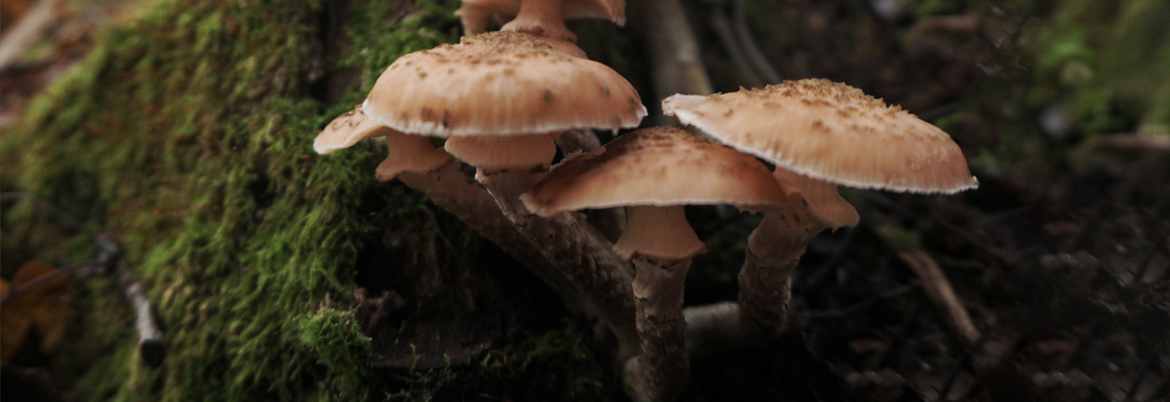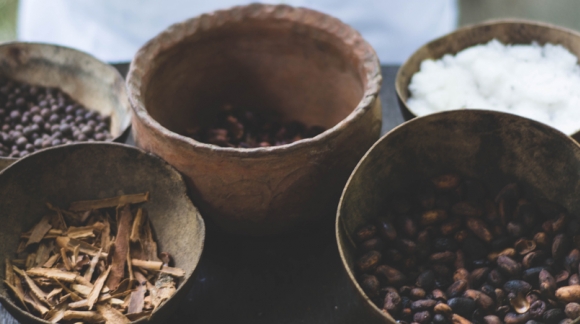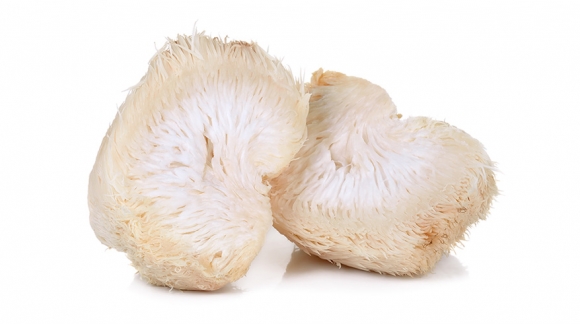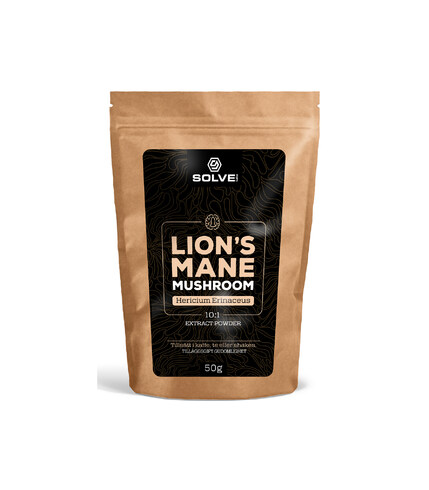Mushrooms - Hidden allies, Internet of the forest and natural recycling

We can find them everywhere. In forests, in meadows, overgrown with decayed tree limbs, at the bottom of the oceans, and even inside orbiting space stations. Mushrooms evoke instinctive fear in some, and fascination in others. They are one of the first organisms to inhabit our planet and are a vital part of every ecosystem. They have been used by shamans for centuries to evoke visions, and today we use them in many branches of medicine and industry. Although they surround us everywhere, we know surprisingly little about them. What are actually these mysterious organisms?
Mushrooms belong neither to the plant family nor to animals. They create a separate kingdom of living organisms called Fungi. Like us, they breathe in oxygen and exhale carbon dioxide. The body of the fungus is not made of tissues, but cells surrounded by chitin (the same substance builds the shells of insects). They have no organs and digest food outside with the help of enzymes. They are heterotrophic organisms, heterotrophs.
Fun fact: Did you know that there are at least 10 fungus spores in every breath you take? They occur not only as well-known and shaped mushrooms, but also as microorganisms.
According to recent estimates, we share 50% of our DNA with them and an astonishing 85% of RNA. It is thanks to these similarities that we can draw from fungi a wide range of defense strategies in the form of bioactive compounds, such as polysaccharides, and more specifically beta-D-glucans. Fungi are constantly fighting against the pathogens they encounter in the most difficult layer of the ecosystem, underground. To understand the difficult conditions they exist in, it is worth mentioning the fact that in 1 gram of soil we can find from 6,000 to 50,000 species of bacteria. At the same time, there are about 300 meters of mycelium in a gram of soil.
The role of mushrooms is not limited to the guardians of our immunity. They revolutionized the treatment of infectious diseases with the discovery of the antibiotic penicillin in 1928 by Alexander Fleming. It is produced by brush fungi (Penicillium). It was one of the most important discoveries in the history of medicine.
Mycelium - mushroom roots
When we think of mushrooms, we usually imagine a hat growing from the ground on a stem - a toadstool is a good example. It is the fruiting body, the reproductive organ of the fungus. We can think of it as an apple on an apple tree. It appears at the moment when there are the right conditions to rapidly mature and disperse billions of microscopic spores (mushroom seeds). Whereas the actual part of the fungal organism is underground and we call it mycelium, in our analogy it is equivalent to the roots of a tree. Without its participation, the fungus would not be able to develop and produce fruiting bodies.
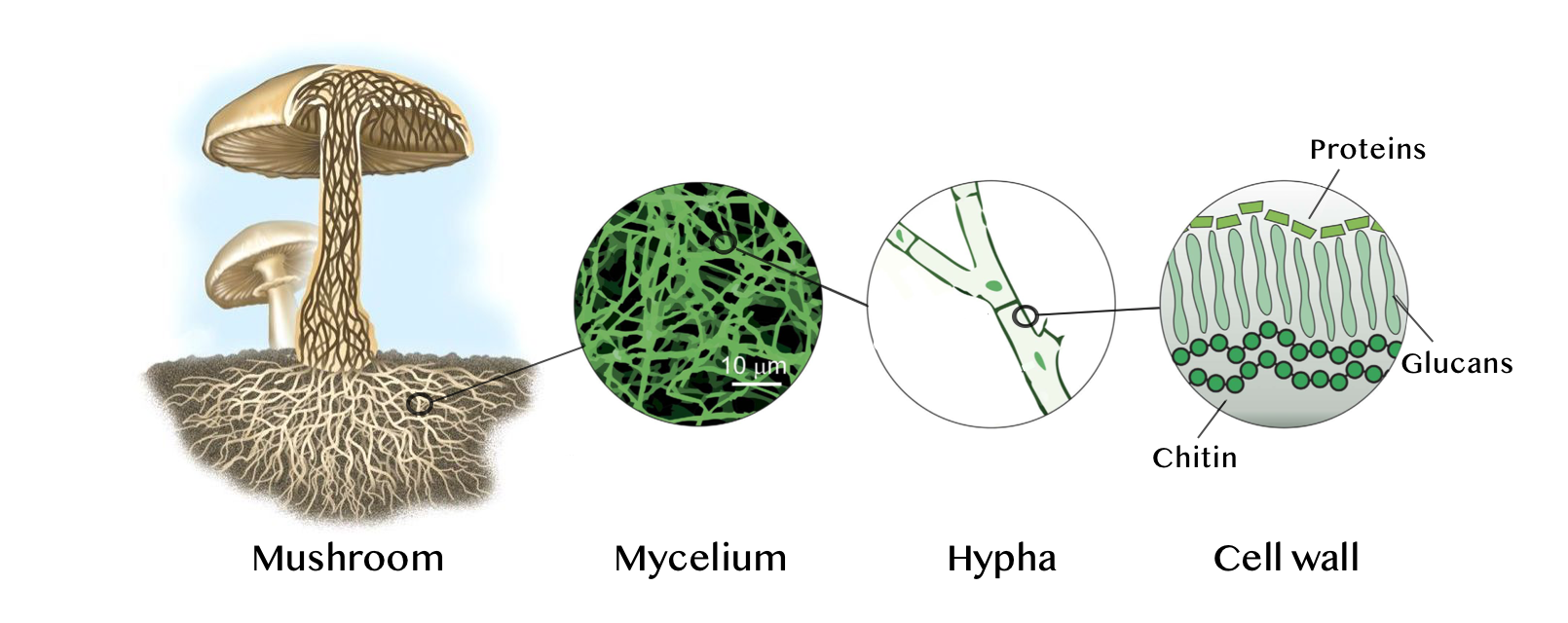
The mycelium can reach astonishing sizes. When asked what is the largest living organism today, most of us will probably answer without hesitation that it is a whale. As you may have guessed, that won't be the correct answer. It is the mycelium of Armillaria soldipes in Oregon. Over the millennia, it has grown to a surprising size of nearly 900 hectares, which is 1,665 football fields, and weighs around 35,000 tons!
The mycelium, as a great network of forest cooperation, is in constant communication with the rest of living organisms. Wait a minute, are the trees talking? We will discuss this in a moment. The organism of the fungus exchanges nutrients, contains alliances, cares for biodiversity and the balance of the environment. According to the American mycologist Paul Stamets, fungi cannot be denied intelligence: "mycelium is structurally similar to nervous tissue". In his TEDtalks talk entitled "How Mushrooms Can Save the World - 6 Ways," Paul mentions uses for mushrooms such as; cleaning up contaminated soil (bio remediation), producing insecticides, treating smallpox and even influenza, a way to get rid of insects without using pesticides, using mycelium to produce bio fuel.
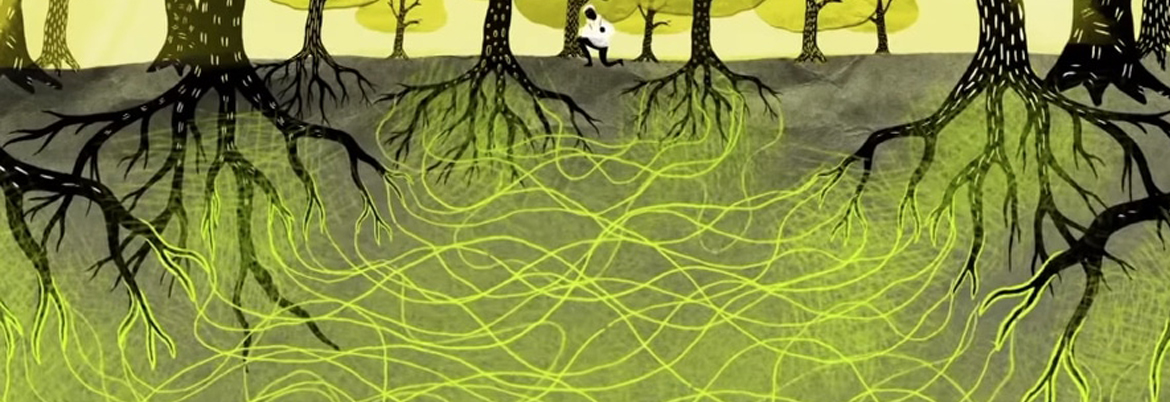
Mycorrhiza - a secret alliance of fungi and plants
Just below our feet there is an information highway that will allow plants to communicate with each other. This process is called mycorrhiza, which literally means mushroom roots. There are two types of it, ectomycorrhiza and endomycorrhiza. In endomyocrine, the mycelium hyphae penetrate to the roots of the plant, while in ectomycorrhiza, they act outside. Almost 90% of all plants have this symbiotic relationship with fungi. Thanks to mycorrhiza, communication can take place both between the fungus and the plant, and between neighboring plants, e.g. trees.
The entire communication transmission is mediated by the equivalent of an optical forest cable - filaments or hyphae. These are the microscopic, thread-like white structures through which the mycelium spreads. Several studies have demonstrated that mycorrhizal networks are able to transport carbon, phosphorus, nitrogen, water, defensive substances and growth between plants. Not only do trees exchange nutrients, they can also warn each other against insect attacks or get rid of newly established plants by spreading toxic compounds through the mycorrhizal web.
This is an amazing fact that irreversibly changes our view of the functioning of ecosystems. Researchers on this subject have come up with an apt and amusing term to reflect the Internet-like nature of this relationship - the Wood Wide Web.
Saprotrophs - forest recycling
Unlike plants, fungi cannot photosynthesize to obtain energy in the form of sugars. Instead, they can obtain food from living organisms - symbiotes, or are forced to break down organic matter and extract appropriate nutrients from it. Such fungi are called saprophytes - heterotrophic. They do this with the help of enzymes found in mycelium hyphae that digest the food source they encounter - a dead plant or animal.
Fungi break down matter and then transport nutrients back to the soil, ensuring proper redistribution of substances and, consequently, fertile soil. Their decomposition possibilities go far beyond the forest undergrowth. Pestalotiopsis microspora, a fungus discovered in the Ecuadorian rainforest, has produced an enzyme that is able to digest polyurethane commonly used to make products such as tires, rubber gloves, and washing sponges.
Summary
Mushrooms are an incredibly rich and diverse kingdom of living organisms that we are just beginning to discover and understand. Literally emerging from the ground and breaking into the mainstream, foreshadowing progress and hope to solve many of the difficult problems we grapple with as a species. They can help us not only in the fight for our health, but also on issues such as disaster recovery, solving the plastic overwaste problem, soil remediation and air purification. On your next trip to the forest, try to look closely and look for representatives of this fascinating kingdom. Just look at your feet. Perhaps you will find medicinal mushrooms there that you have had no idea about before.
Author

Bibliography:
http://jonlieffmd.com/blog/cellular-intelligence-blog/are-fungus-the-dominant-life-form
2015 Mycelium Running by Paul Stamets
Tajemnicze życie grzybów - Robert Hofrichter
The Ecology and Physiology of the Fungal Mycelium by D. H. Jennings , A. D. M. Rayner https://www.sciencemag.org/news/2019/05/wood-wide-web-underground-network-microbes-connects-trees-mapped-first-time
http://www.bbc.com/earth/story/20141111-plants-have-a-hidden-internet
https://thekidshouldseethis.com/post/the-wood-wide-web-how-trees-secretly-talk-to-and-share-with-each-other

